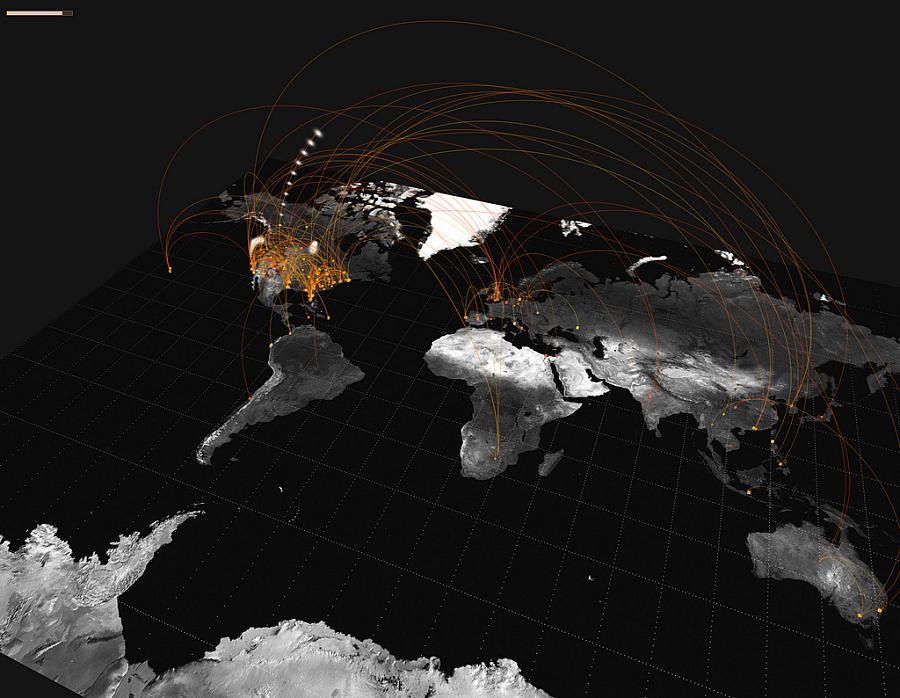Choosing Health: Things I Learned at Net Impact 2011

The annual Net Impact conference brings together some of the world's brightest young business minds to tackle big questions about how to build a better future. The conference's slogan states, "When profits align with the interests of society and the planet, everyone benefits."
That rather nicely sums up the thousands of different ideas that were discussed over three days in Portland, during dozens of panels on clean energy, ethical business practices and public. The excitement at the conference was palpable, with both new MBA graduates and corporate veterans talking optimistically about innovations despite the ongoing economic gloom.
Here are some tips from the conference that could be helpful for health writers. I'll have more in tomorrow's post.
Don't forget about scale. How many times have you walked through a Wal-Mart, Macy's or Target store and thought about the health of the people working there? These are some of the biggest retailers, indeed some of the biggest companies, in the country. Target employs 355,000 people in its stores, which is twice as many people as there are in Salt Lake City.
I talked with Andrew Bryson, a vice president with the Saatchi & Saatchi consulting firm, about a sustainability program they launched for Wal-Mart. "Since sustainability and health are so interconnected, we encouraged people to choose a personal action connected to things like the environment, health and their community," Bryson told me. "What surprised us the most was the overwhelming number of people who chose health."
There was no hard sell. No financial incentive. No "scared straight" health propaganda. Instead, they gave employees a wide range of ideas of ways they might improve their health and said, basically, "Do what feels right for you." They found that more than 19,000 Wal-Mart employees quit smoking. They also, as a group, lost 184,315 pounds.
With Wal-Mart employing 1.4 million people in the United States alone, those might not seem like big numbers. But think about the company's scale. As Bryson explained to me, with a company as big as Wal-Mart, even persuading a small percentage of employees to change their behavior can have a big societal impact. Of course, there's also the issue of Wal-Mart cutting back on its health insurance offerings for part-time employees and raising premiums, too. But that's another story.
The backstory may be the front page story. I moderated a panel on public-private partnerships in global health. Every speaker described exciting health programs that in and of themselves would be and have been news stories. A factory producing long-lasting insecticide-treated bed nets in Tanzania. A medical boat tour down one of Africa's longest rivers. A new take on a female condom.
What all of these projects had in common, though, was a complex back story of partnerships between governments, United Nations agencies, nonprofit organizations, academic researchers, and private corporations. Often that type of list ends up as the final sentence in a story, if it makes it into the story at all.
I think there are more stories to be done about the way these projects come together to share some of encouraging lessons from successes and the hard lessons from failures. Neeti Nundy is a commercialization officer for PATH, one of the world's largest global health nonprofits. Her job is to find ways to make health care products – such as women's condoms – thrive in markets where people may earn only a few dollars a day.
She told me, "Even if you don't work in health, you know that bringing a vaccine to market can take many years. We've seen it take 15 to 20 years, and it can cost around $500 million. By putting together a public-private partnership that leverages the strength of each partner, you can make things happen in a lot less time and with a lot less money."
The specifics around what makes these partnerships work (and why some of them fail) would generate any number of fascinating stories.
Home page photo credit: Jer Thorp via Flickr
Photo credit (above): Wal-Mart via Flickr

